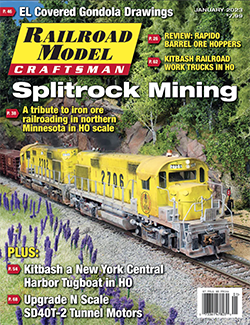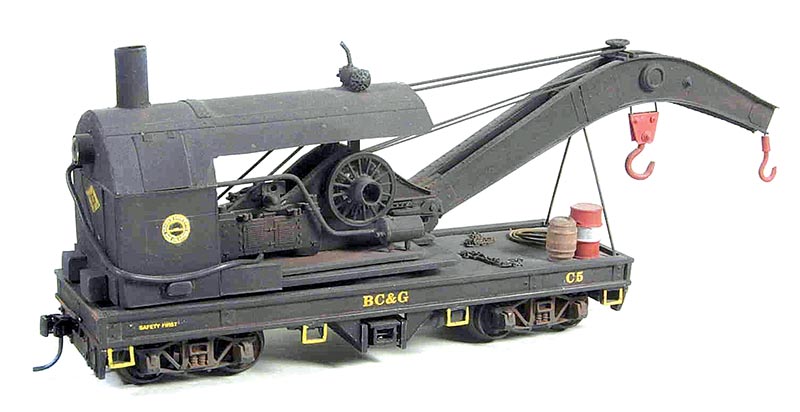 The term “rivet counting,” as used by model railroaders, refers to the practice of accurately and completely modeling each and every detail of a prototype down to the last rivet. It is something that some modelers believe is the ultimate objective, even to the point of counting rivets on other people’s models either to congratulate or point out shortcomings. At some risk of offending those modelers, however, I’d like to offer a counterpoint to counting rivets.
The term “rivet counting,” as used by model railroaders, refers to the practice of accurately and completely modeling each and every detail of a prototype down to the last rivet. It is something that some modelers believe is the ultimate objective, even to the point of counting rivets on other people’s models either to congratulate or point out shortcomings. At some risk of offending those modelers, however, I’d like to offer a counterpoint to counting rivets.
I have been interested in trains since, well, forever. I grew up with American Flyer in my youth and I have considered myself a serious model railroader for nearly 50 years. I’m now putting the finishing touches on my fourth S scale model railroad depicting the Buffalo Creek & Gauley in the early 1960s (See the November 2022 issue). Over the years I enjoyed writing articles for hobby magazines, giving clinic presentations, and earning the NMRA’s Master Model Railroader certificate. With that background, you might assume that all my models must be really detailed and exactly like the prototypes they represent in every way, right? Well, actually not.
Allow me to elaborate.
I sometimes employ a style that may be fading from popularity but one that I think offers a viable alternative to counting rivets, an approach that may be less intimidating to those just beginning to explore the world of scratchbuilding and/or kitbashing. It’s based on the premise that what’s important to a convincing model is capturing the feel of the prototype, not reproducing it exactly. This approach is sort of like using the concept of proto-freelancing a railroad or selectively compressing a structure but applying it to an individual piece of rolling stock or locomotive model. I think of it as capturing the “visual character” of the subject.
I came to this approach to modeling quite by necessity. When I got serious about model railroading back in the late 1970s, both my funds and my modeling skills were limited, but I was highly motivated to get a model railroad built. Having grown up with S scale, I wanted to stay with it, but commercially available equipment was quite limited, especially equipment that I could afford. I decided that, rather than wait until exactly what I wanted was available, which might be never, I would build what I could with the skills I had. I decided early on that it would be better to have an imperfect model than to have no model at all. This means that my creations don’t have to be dimensionally perfect nor have every feature of the prototype. Rather, my objective is to make each model recognizable to someone who was familiar with the real thing.
It also became apparent quite early on in my modeling of the BC&G, a rather obscure West Virginia short line, that few folks would ever operate, visit or even view photos of the layout who would know much about the prototype. So if a car had a few less windows than it should or I deviated from the dimension of a sliding door or the diameter of a steam locomotive’s drivers a bit, no one would be the wiser.
For example, check out the images on the opposite page. Combine X-6 was a 60-foot steel-sheathed truss-rod car built in the 1890s. It had 11 windows on each side and the baggage door had four windows. But my model has just six windows and the baggage door has five. Close enough, I say. Or take a look at BC&G Caboose C-2. The window placements are incorrect. The model was built from an American Models off-set cupola caboose. I decided to move the cupola to the center and add details to the platforms. But moving the windows would have been a major project. However, the model is still identifiable as the prototype. Close enough, again. The same goes for the crane and the railbus.
As mentioned, I’m putting the finishing touches on my fourth layout depicting the BC&G. Anyone familiar with the real BC&G will recognize the structures, locomotives and rolling stock as representing their respective prototypes but many of them are proto-freelanced renditions. Collectively, however, I believe they have the look and feel of the equipment they represent. Instead of taking the time to make every model a perfect one, right down to the number of rivets on it, I opted to make many of them just “look right” and used the remaining time to get layouts built. It’s a trade-off that I’m glad I made.
—Brooks Stover



